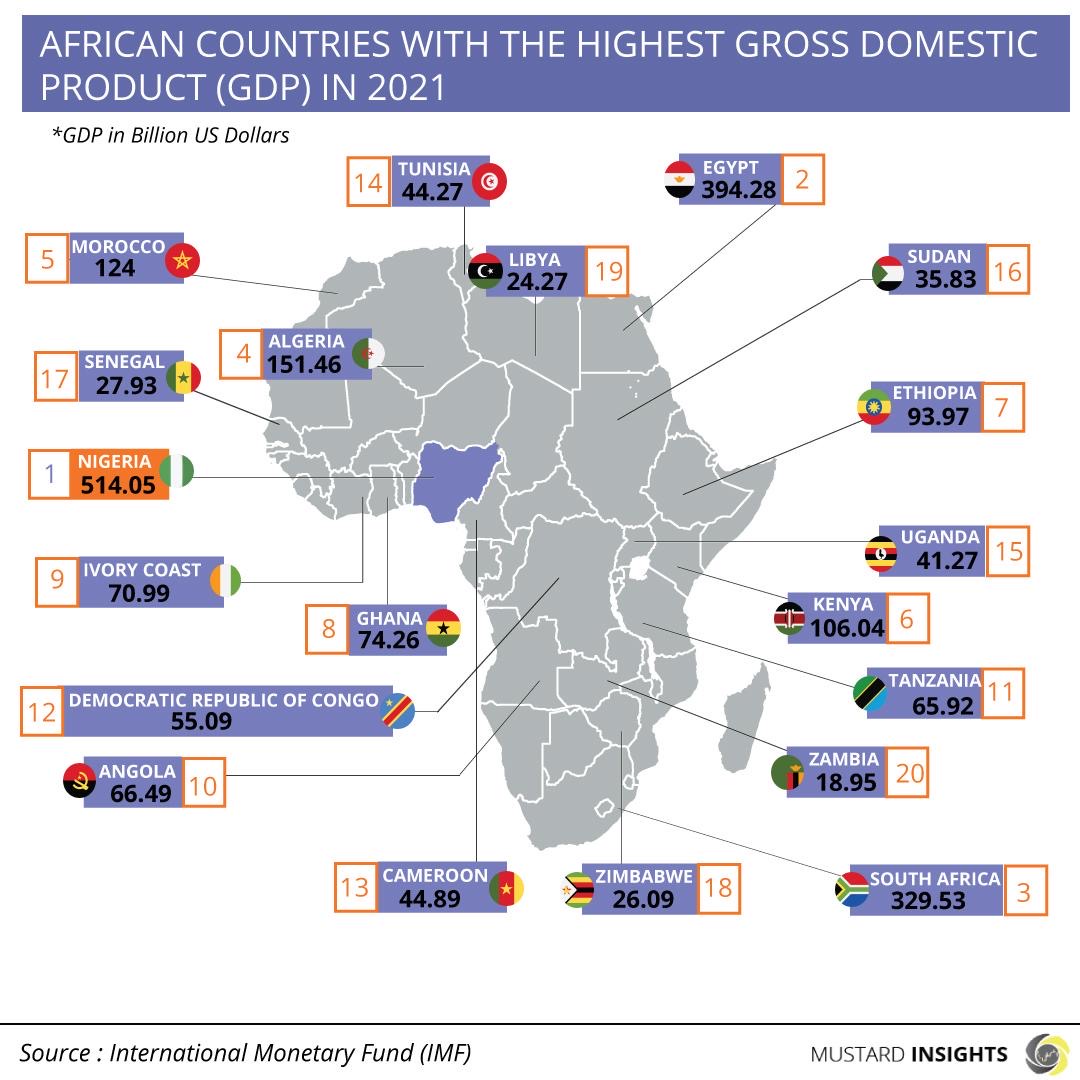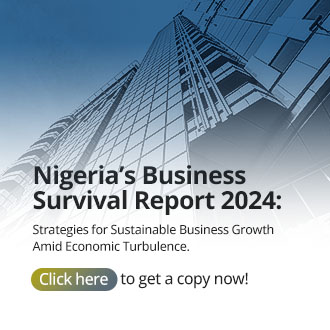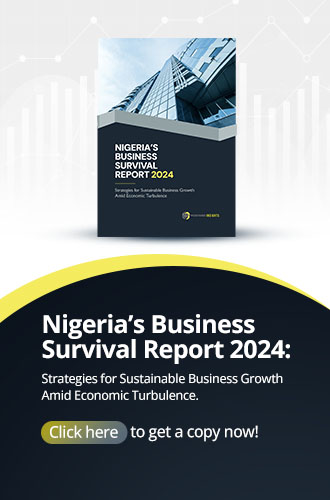According to Africa Development Bank Group (AfDB, 2021), of Africa’s nearly 420 million youth aged 15-35, one-third are unemployed and discouraged, another third are vulnerably employed, and only one in six is in wage employment.

The International Monetary Fund (IMF) estimates Africa’s total Gross Domestic Product (GDP) for 2021 as approximately 2.7 trillion USD, as the region continues to recover from 2020s economic recession; its worst in half a century.
According to the African Development Bank (AfDB), Africa’s GDP in 2021 will experience a growth of 3.4% after contracting by 2.1% in 2020 on the back of COVID-19’s global pandemic. The recovery in Africa’s GDP will be driven by the complete easing of the pandemic imposed lockdown, increased vaccination, improving activities in tourism and a rebound in commodity prices.
Breakdown & Key Metrics
Gross Domestic Product (GDP) is the total market value of the goods and services produced by a country’s economy. Major contributors to the GDP of many African countries are the oil & gas sector, agricultural sectors, financial sector & the manufacturing sector.
According to the IMF report, Nigeria ranks as the largest economy in Africa, with a GDP of about 514.05 billion USD. Egypt and South Africa are second and third, with 394.28 billion USD and 329.53 billion USD, respectively.
Instructive to note that Nigeria is the only country in Africa to have a GDP exceeding 500 billion USD. When summed up with Egypt’s and South Africa’s GDP, their combined GDP account for almost half of Africa’s total GDP in 2021.
Algeria ranks fourth on the list with 151.46 billion USD, less than half of South Africa’s GDP. Morocco is fifth with 124 billion USD while Kenya is sixth with a GDP of 106.04 billion USD.
Ethiopia (8th), Ghana (9th), Ivory Coast (10th), Angola (11th), Tanzania (12th) and the Democratic Republic of Congo (13th) make up a list of African countries with GDPs of over 50 billion USD but less than 100 billion USD. Sao Tome and Principe has the lowest GDP of all the African countries.
The Low Per Capita Income Story
According to the United Nation, COVID-19 increased the number of newly poor people in Africa by up to 55 million in one year, more than the combined total since 1999. Prior to the pandemic, achieving the first Sustainable Development Goal to end extreme poverty by 2030. It is now even further out of reach.
Following the pandemic, the sub-Sahara Africa's GDP per capita growth is now projected to remain less than 2 per cent in 2022-2023, indicating that the poverty headcount rate in Africa will remain elevated.
While GDP growth is recovery, Africa remains overwhelmed by unequal income and wealth distribution on the back of rising unemployment rates. According to Africa Development Bank Group (AfDB, 2021), of Africa’s nearly 420 million youth aged 15-35, one-third are unemployed and discouraged, another third are vulnerably employed, and only one in six is in wage employment.
Takeaway
Faster growth in Gross Domestic Product (GDP) increases the overall size of Africa’s economy and strengthens financial capacity. On the other hand, growth in per capita GDP across African countries increases the material standard of living of Africans.
Essentially, Inclusive growth is economic growth that is distributed fairly across society and creates opportunities for all. While the growth recovery story in Africa is good, efforts must be geared towards implementing developmental policies to improve welfare and overall standard of living.
Nigeria’s Real GDP Growth Trend as at Q3 2024
Thoughts?
We won't share your email address. All fields are required.
